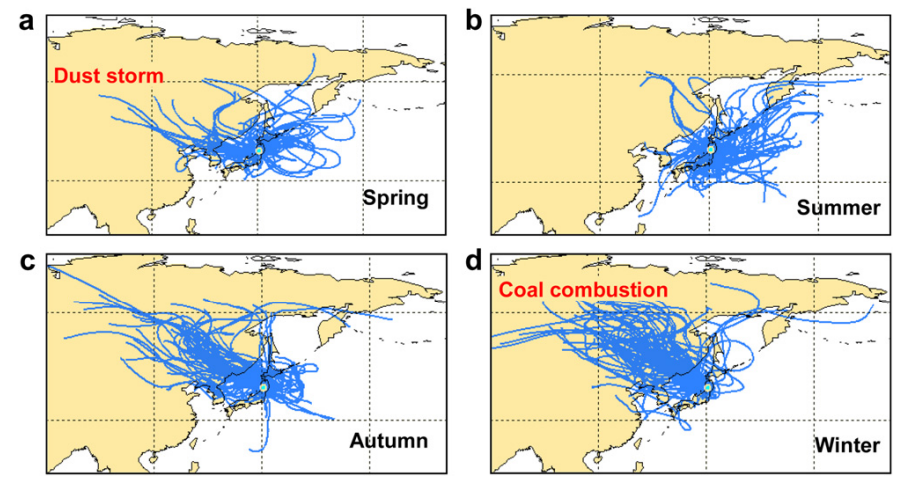冬季欧亚大陆燃烧排放对日本气溶胶中元素碳季节性d13C值的影响

我们调查了2008年4月至2010年1月在日本秋田县采样的气溶胶中悬浮颗粒物(SPM,100%截止气动直径为10毫米的颗粒)和PM2.5(50%截止气动半径为2.5毫米的颗粒物)的浓度,以及SPM和PM2.5以及可能来源的样品中元素碳(EC)的碳同位素比值(d13C)。我们还确定了SPM的离子含量,并估计了研究期间到达秋田县的气团的后轨迹。SPM浓度很低(年平均15.2 mg m 3),春季较高,冬季较低。我们将春季较高的SPM归因于来自亚洲大陆的沙尘暴。年平均PM2.5浓度为8.6 mg m3。源样本(汽油和柴油车尾气、壁炉烟尘、露天生物质燃烧排放物、街道灰尘、土壤、木炭和煤炭)的d13C范围为34.7至1.8。汽油轻型车(24.4 0.7&)和乘用车(24.1 0.6&)的烟尘d13C值与所有柴油车(24.3 0.3&)的烟灰d13C值非常相似。与夏季值相比,冬季SPM中d13C富集,而且PM2.5中d13C仅检测到轻微的季节性趋势。根据这些数据和源结果,我们假设冬季SPM和PM2.5的d13C富集是煤炭燃烧等海外燃烧过程的长期影响。此外,SPM的d13C与SPM中Cl和Mg2+含量相关,表明海盐的影响。我们通过反轨迹分析验证了这一假设。结果表明,冬季SPM和PM2.5的EC受大陆影响。